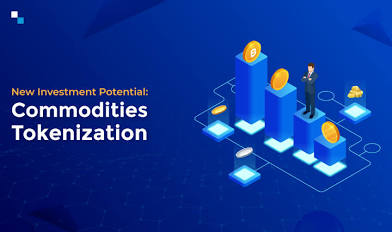IT IS YOUR MONEY
Blockchain Enables Transparent Commodity Trading
Blockchain is transforming commodity trading by enhancing transparency, reducing fraud, and streamlining supply chains. From gold to grain, digital ledgers track ownership and provenance in real time. Major players like Cargill and Mercuria are adopting blockchain to improve efficiency. This shift reduces settlement times and builds trust across global markets.

The Problem with Traditional Commodity Markets
Commodity trading—encompassing oil, metals, grains, and energy—has long relied on paper-based contracts, manual reconciliation, and fragmented data systems. These inefficiencies lead to delays, disputes, and counterparty risk. Fraud, such as double-selling or forged documents, remains a persistent issue, particularly in cross-border transactions.
For example, in 2019, a $3 billion fraud scandal in the Chinese commodities market revealed how paper-based bills of lading could be duplicated. Such incidents erode trust and increase costs for all participants, from producers to end buyers.
How Blockchain Solves Key Challenges
Blockchain introduces a single, immutable ledger accessible to all authorized parties. Each transaction—ownership transfer, quality certification, shipping status—is recorded in real time, reducing discrepancies and enabling auditability.
Smart contracts automate processes like payment upon delivery verification, eliminating manual intervention. For instance, when a shipment of soybeans reaches a port, IoT sensors and customs data can trigger automatic payment via a pre-programmed contract, cutting settlement time from days to minutes.
Real-World Implementations
Major commodity traders are leading the charge. Cargill uses blockchain to track U.S. grain shipments, providing farmers and buyers with real-time visibility. Mercuria, one of the world’s largest energy traders, launched a blockchain platform for oil trading in partnership with IBM, reducing document processing by 70%.
In precious metals, the Royal Mint of the UK partnered with CME Group to create "Royal Mint Gold," a blockchain-based gold trading system. Each token represents one gram of physical gold stored in a vault, combining digital convenience with tangible backing.
Future Trends and Industry Impact
The World Economic Forum estimates that blockchain could unlock $1 trillion in trade finance by 2030, with commodities as a key beneficiary. Tokenized commodities also enable fractional ownership—investors can buy digital tokens representing ounces of gold or barrels of oil without storing physical assets.
As central banks explore digital currencies and regulators endorse digital trade documents, blockchain-based commodity platforms will become standard. The integration of AI and IoT with blockchain will further enhance predictive analytics and supply chain resilience.
Blockchain is not just a tool for efficiency—it’s a foundation for trust in global trade. By digitizing commodities, the industry is becoming more transparent, secure, and inclusive.
To learn how blockchain-based commodity trading can enhance your investment or business operations, visit DigitalAssets.Foundation and consult with specialists for a FREE consultation.

More News
© 2025
